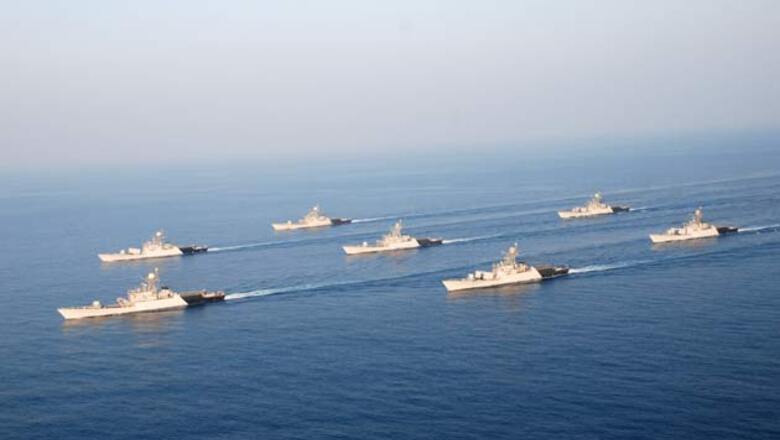
views
Singapore: India and China will order 100 new naval ships and submarines each by 2032 due to changing global security environment and increasing reliance on the sea for trade in the strategic region, according to a US-based naval consultancy. The new orders would include nuclear and conventional submarines and new aircraft carriers, a balanced mix of destroyers, frigates, smaller units, amphibious and logistics vessels, Coast Guard and maritime patrol forces, said Bob Nugent, the vice-president of AMI International.
The two countries combined would account for 30 by volume and 45 per cent by value of the 1048 naval vessels, worth about $200 billion, to be ordered by the Asia Pacific countries in next 20 years, he said. "We see the Asia Pacific market as about $200 billion worth of new ships and submarines," he said. The region has become second to the US.
"The Asia Pacific submarine investment is significant, with 100 to be ordered over 20 years, making it the single region buying more submarines than anywhere else in the world," Nugent told a press conference of the International Maritime Defence Exhibition & Conference to be held here on May 14-16.
Comparatively, the US was projected to order 453 naval vessels, or about 14 per cent of the global orders, between 2012 and 2032. South Korea, Japan and Australia were expected to acquire 220 new vessels worth USD 62 billion during the next 20 years.
Singapore, Malaysia, Indonesia and Vietnam were also active in the market with the new ship and submarine acquisition programmes. Nugent said Asia Pacific's increasing trade, increasing reliance on the sea for trade and positive economic growths provide the fund for naval investments.
He noted the changing global security environment, saying there was a broader demand for all aspects of naval capabilities after the Cold War ended. There was also increased demand for maritime security in the growing economic zones and need to upgrade technologies in naval facilities.
"India's Scorpene procurement and follow-on P-75 submarine programme remain the centrepieces of the region's largest confirmed spender on new submarine capability. The launch of the indigenous Arihant nuclear submarine also marks a long-awaited next step in India's development as a global navy," said Nugent.
Meanwhile, China was forecast to add 16 conventional and nuclear powered hulls to the fleet over the next 5 years, the most number of new hulls of any Asia Pacific navies for that period. "China's submarine procurements are also influencing other navies in the region to fill submarine and anti-submarine capability gaps, notably in Vietnam, where the first of six new conventional submarines from Russia are expected to become operational within the next 12 months."
Meanwhile, 15 warships from across the globe have arrived in Singapore to participate in the exhibition and conference this week. The ships include India's INS Satpura, a Shivalik class Frigate and INS Kirch, a Kora class Corvette.
Some 30 chiefs of navy and coast guard, and heads of maritime agencies would be attending the conference while 194 naval and defence hardware and software companies would be participating in the three-day exhibition.


















Comments
0 comment